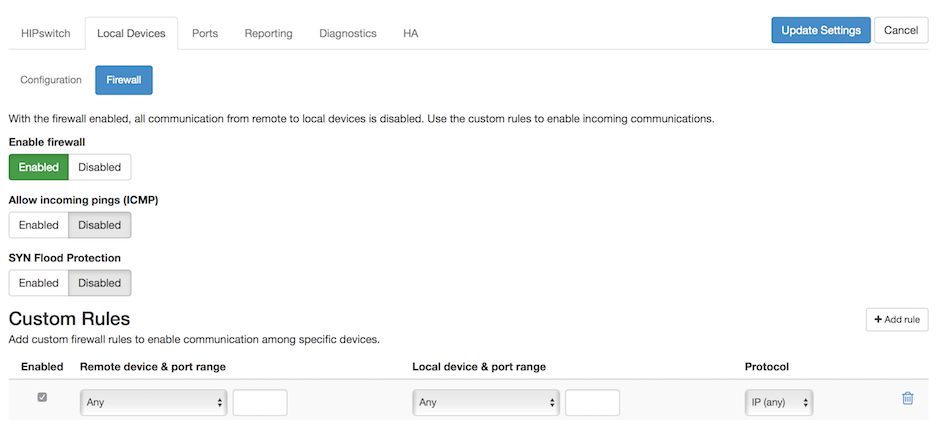Use Custom firewall rules and communication policies
The HIPswitch firewall operates on the principle of network whitelisting. Once the firewall is enabled, custom rules determine what communications are passed by the local HIPswitch as incoming connections to local devices. If a local device is a server, and the firewall is enabled, custom rules are required to allow incoming connections to the local server.
Custom firewall rules can be enabled, disabled or deleted. When you delete local devices from a HIPswitch or delete remote devices from remote HIPswitches, the custom firewall rules associated with the device are deleted. If you remove a HIPswitch from the overlay network, the custom firewall rules associated with the HIPswitch are labeled not reachable.
Remote Device communication
Remote devices are all devices that are reachable in the overlay network. In addition to specifying custom rules, you must also enable the device-level communications policies. Remote devices are those devices that are initiating connections to local devices. Remote devices typically use random port numbers for their connection attempts, and it is often necessary to leave the remote device port range blank.
Local Device communication
Local devices are all devices connected locally to the HIPswitch you are configuring. In addition to specifying custom rules, you must also enable device-level communications policies. Local devices are devices that are receiving incoming connections from remote devices. Most local device services are listening on a specific port or ports, which you should specify as part of the custom rule.
Select TCP or UDP protocol
In addition to specifying the remote devices and ports, and the local devices and ports, you may also specify the underlying communication protocol. Currently supported protocol limitations are TCP and UDP. If you are using a different IP protocol, select IP (any) from the Protocol list, which allows any IP protocol to be used.

